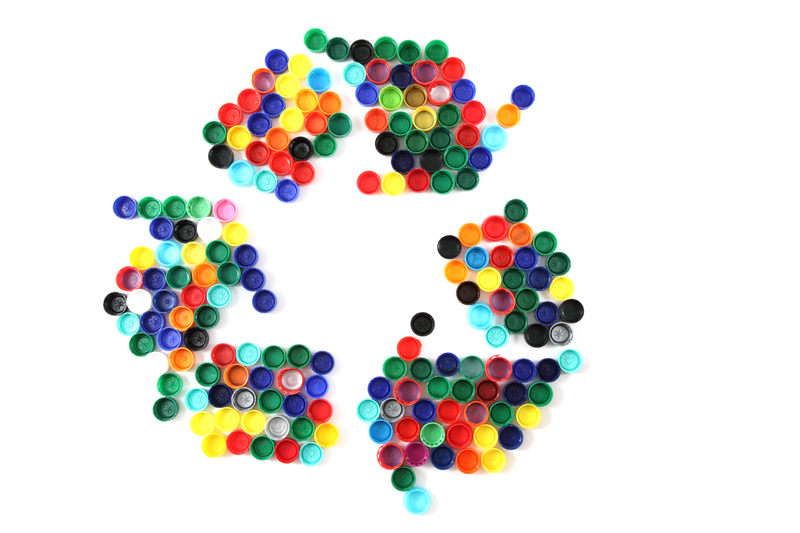Tailored Strategies for Reducing Household Waste: Comprehensive Guide
Modern households generate a significant amount of waste every day, much of which ends up in overflowing landfills or polluting our natural environment. Reducing household waste is more crucial than ever, not only to preserve our planet but also to lead a healthier, more cost-effective lifestyle. While general advice on waste reduction abounds, a personalized approach yields the best results. In this guide, you'll discover tailored strategies for reducing household waste that fit your unique circumstances, preferences, and goals.

Why Household Waste Reduction Matters
Before diving into specific, actionable tips, it's essential to understand why reducing domestic waste is so important:
- Environmental Protection: Less waste means fewer landfills, lower pollution, and decreased greenhouse gas emissions.
- Resource Conservation: Proper waste management supports recycling and reusing valuable materials, conserving natural resources.
- Financial Savings: Buying less and maximizing resources ultimately saves money for households.
- Healthier Living: Minimizing waste, especially food and plastics, leads to healthier homes and communities.
- Community Impact: Waste reduction fosters community engagement through sharing, composting, and cooperative recycling efforts.
Assessing Your Household Waste Profile
The first step in crafting personalized waste reduction solutions is to assess your current habits. Each home is different, and a one-size-fits-all approach may not deliver optimal results. Analyze the types and amounts of waste generated over a week or month. Key questions to consider:
- Which items fill your trash bin the most (food scraps, packaging, paper, plastics, etc.)?
- How often do you throw away unused or expired products?
- What waste materials are recyclable in your area?
- Are there recurring waste items (e.g., single-use plastics, food wrappers) you can identify?
Once you have a clear understanding, you can tailor your waste reduction strategies to your specific needs.
Customized Household Waste Reduction Tactics
1. Target Food Waste with Smart Kitchen Habits
Food waste is a major contributor to household trash. Combatting it requires a strategic and unique approach:
- Plan Your Meals: Create weekly meal plans, shopping lists, and stick to them. Only buy what you need to avoid over-purchasing and spoilage.
- Use, Reuse, and Preserve: Incorporate leftovers into new recipes and freeze surplus food before it expires. Get creative with meal prep to utilize all ingredients.
- Compost Organic Waste: Set up a compost system for food scraps and yard waste. Home composting diverts a significant amount of trash from landfills.
- Master Storage: Store perishables efficiently (fridge organization, proper containers) to extend shelf life and avoid spoilage.
- Embrace Imperfect Produce: Buy "ugly" fruits and vegetables, which taste the same but often get discarded due to appearance.
2. Reduce Packaging and Single-Use Plastics
Packaging waste, especially plastics, is a key target for household waste reduction plans. Consider these tailored tactics:
- Buy in Bulk: Purchase staple items in bulk to minimize packaging, or shop at stores that allow you to bring your own containers.
- Choose Reusables: Opt for reusable shopping bags, produce bags, water bottles, coffee cups, and food storage containers.
- Support Low-Waste Brands: Select products with minimal or recyclable packaging, or those from brands committed to sustainability.
- DIY Products: Make your own cleaning supplies or toiletries using natural ingredients to avoid single-use containers.
- Switch to Bar Products: Use bar soap, shampoo bars, and solid dish soaps instead of bottled alternatives.
3. Personalize Paper Waste Management
Piles of unsolicited mail, printer paper, and packaging contribute significantly to household waste. Implement these customized steps:
- Go Digital: Switch bills, statements, and magazines to digital wherever possible.
- Opt Out: Unsubscribe from junk mail and catalogs you no longer need.
- Reuse and Repurpose: Save one-sided prints as scrap paper or for kids' art projects.
- Recycle Responsibly: Familiarize yourself with local recycling guidelines to maximize paper recovery.
- Get Creative: Try paper crafts, composting, or using shredded paper as pet bedding.
4. Tackle Electronic and Hazardous Household Waste
Electronic waste (e-waste) and hazardous substances like batteries, chemicals, and bulbs require special attention in your waste reduction plans:
- Proper Disposal: Use community collection events or drop-off centers for e-waste and hazardous materials; never include them in regular trash.
- Reduce Upgrades: Extend the life of your electronics through repairs, upgrades, or software updates instead of frequent replacements.
- Buy Responsibly: Purchase energy-efficient, long-lasting devices or products that are easy to recycle.
- Donate or Rehome: Give working gadgets to charities, schools, or community centers.
5. Clothing and Textile Waste Solutions
Fashion trends and low-cost clothing have led to excessive textile waste. Reducing household clothing waste can be achieved with these tailored strategies:
- Curate Your Wardrobe: Buy fewer, high-quality pieces that last longer and transcend seasonal trends.
- Repurpose & Repair: Mend clothing, upcycle fabrics, or turn old textiles into rags or crafts.
- Organize Swaps: Host clothing swap parties with friends, neighbors, or local community groups.
- Recycle Textiles: Donate unwanted clothes to reputable organizations or textile recycling facilities.
Engage the Whole Family in Waste Reduction
*Personalized waste solutions* become even more effective when everyone at home gets involved. Here's how to foster a culture of sustainability within your household:
- Assign Roles: Give each family member a waste-reduction task, such as monitoring recycling or organizing compost bins.
- Educate and Empower: Encourage curiosity and learning about environmental issues and simple habits that make a difference.
- Reward Progress: Set achievable goals and celebrate successes (e.g., reducing trash volume for the month).
- Get Creative Together: Try DIY projects, upcycling crafts, or cooking with leftovers as family activities.
Integrate Technology for Custom Household Waste Solutions
Today's digital tools and mobile apps can be tailored to support your tailored waste reduction journey:
- Inventory Apps: Track pantry items to prevent overbuying and food waste.
- Waste Sorting Guides: Use apps (offered by many municipalities) to improve recycling habits.
- Compost Calculators: Learn what can and can't be composted at a glance, and track your impact.
- Donation Platforms: Find or post gently used items for local reuse, keeping them out of landfills.
Community Engagement and Local Programs
No household is an island. Take advantage of community resources to amplify your waste reduction efforts:
- Participate in Local Cleanups: Join neighborhood litter removal or zero-waste events.
- Tap into Sharing Economies: Use libraries, tool banks, or community fridges to borrow, share, and distribute excess goods.
- Advocate for Change: Support initiatives for improved recycling, composting, and waste management in your community.
- Learn Together: Take workshops or attend sustainability seminars offered by local organizations.
Overcoming Challenges: Common Barriers and Solutions
Adopting tailored household waste reduction strategies isn't always smooth sailing. Here's how to overcome the most common obstacles:
- Lack of Time: Start small. Focus on one habit (e.g., composting) before adding more.
- Confusion Over Recycling: Stay informed about council rules. Post a visible cheat sheet in your kitchen for reference.
- Limited Space: Use stacking bins, compact composters, or community drop-off points for excess recyclables.
- Family Resistance: Share the bigger picture of environmental impact, and empower each member to contribute their own way.
- Inconsistent Local Services: When municipal options are lacking, seek out independent recyclers or mail-back recycling programs.
Sustainable Purchasing: The Key to Lasting Impact
One of the most powerful ways to cut household waste is to prevent it at the source through mindful purchasing:
- Adopt a Minimalist Mindset: Buy only what you truly need. Avoid impulse purchases and one-time-use products.
- Prioritize Quality Over Quantity: Invest in durable, repairable items that will outlast their disposable counterparts.
- Support Local: Buying locally produced goods reduces packaging and shipping waste, while supporting your neighborhood economy.
- Research Brands: Choose companies with transparent sustainability policies and environmentally friendly practices.

Measuring and Celebrating Your Progress
Tracking your household's waste reduction efforts is motivating and rewarding:
- Set Benchmarks: Weigh your trash and recycling for a baseline, then set realistic monthly reduction targets.
- Visual Reminders: Keep a waste-reduction tracker on the fridge or a family whiteboard.
- Share Your Success: Post about your achievements on social media, or inspire friends and neighbors to follow suit.
- Refine Strategies: Regularly review what's working, and where you can improve. Adjust as your needs and routines change.
Conclusion: Make Waste Reduction Work for You
There is no universal path to a waste-free household--it's all about tailoring your approach to suit your unique family, habits, and community resources. By honestly assessing your waste profile, implementing personalized strategies for household waste reduction, leveraging technology, engaging your family, and supporting community efforts, you can make a meaningful and lasting difference.
Remember: Every step you take, no matter how small, helps pave the way for a cleaner, greener future. Start with a single sustainable change, and watch it inspire more as you go. Reducing your household waste is not only good for the environment--it's also a rewarding way to live more mindfully, save money, and empower those around you to do the same. Let your journey to a zero-waste household begin today!